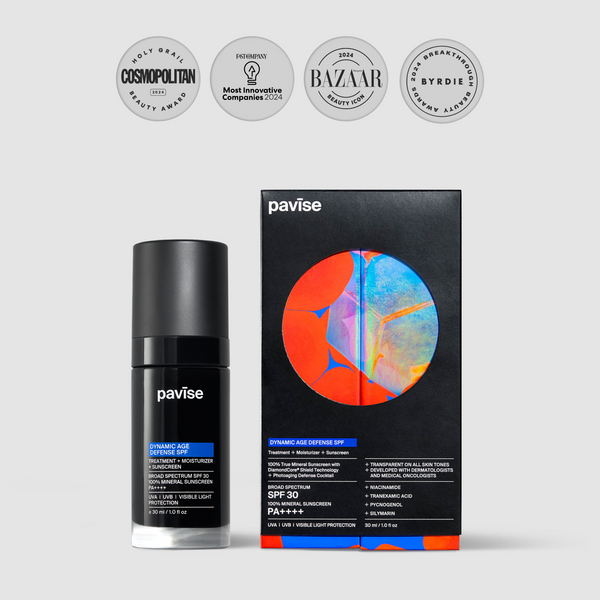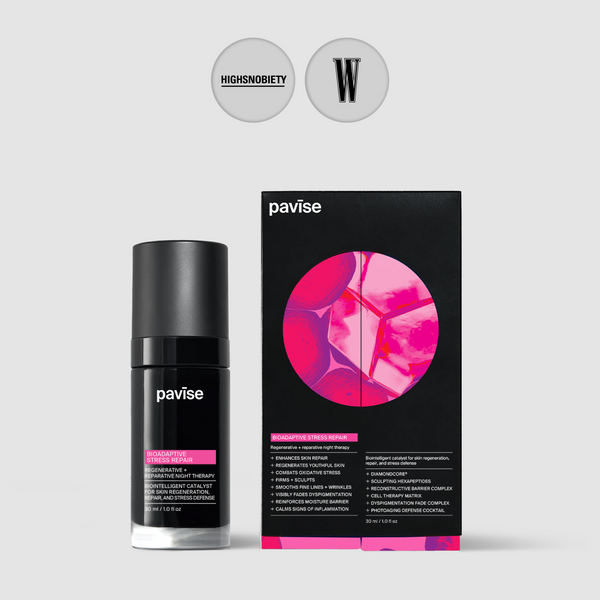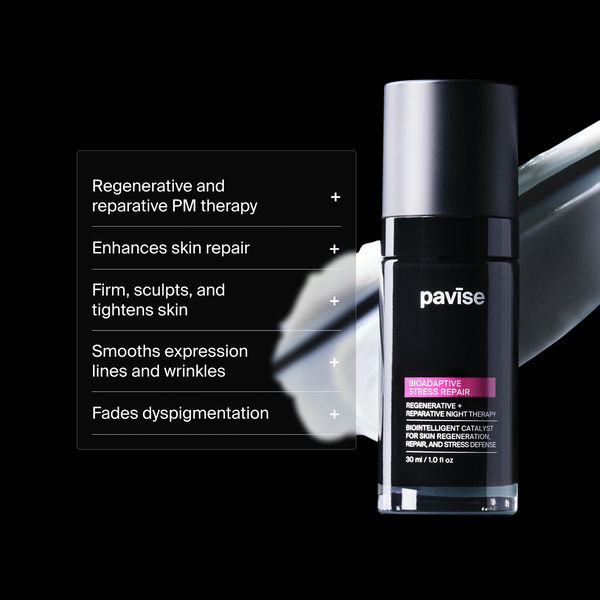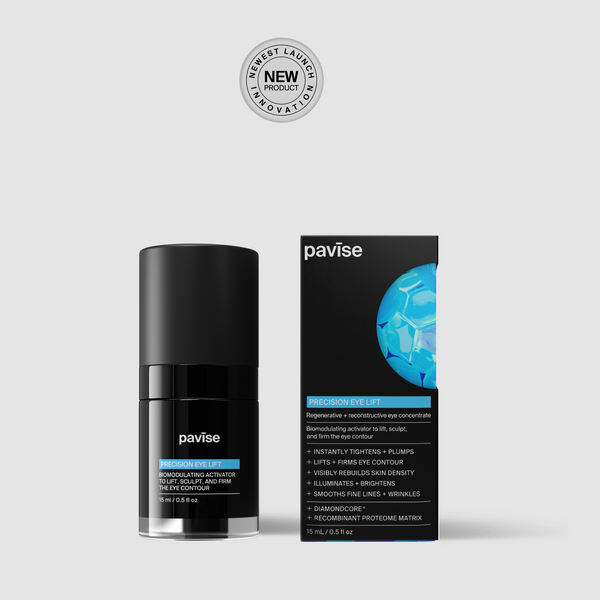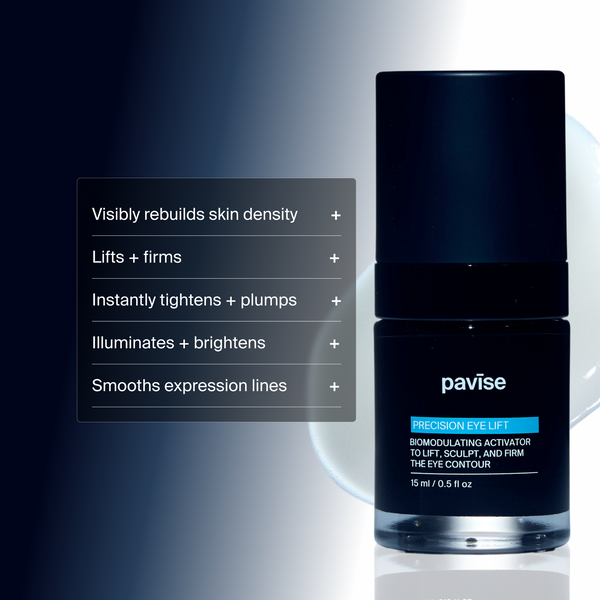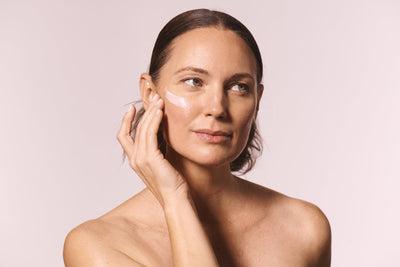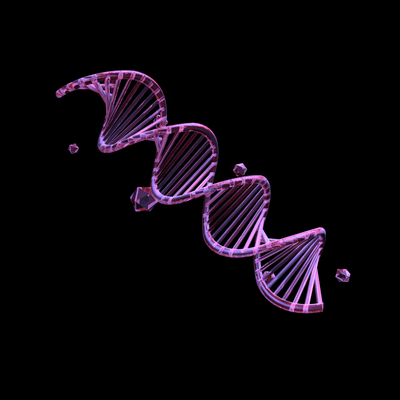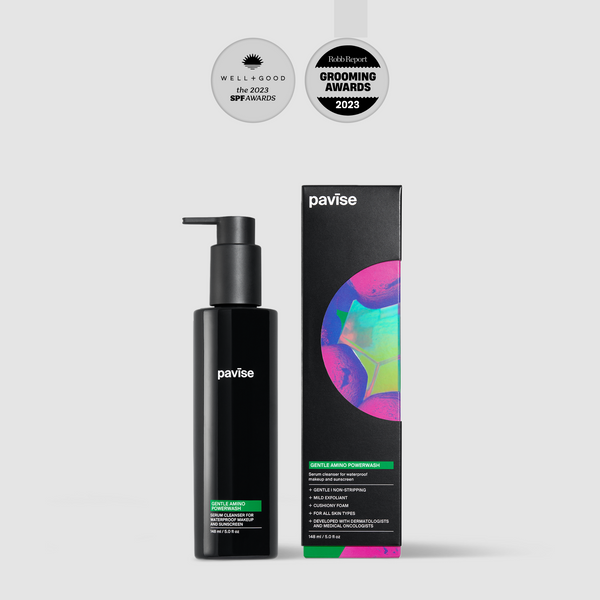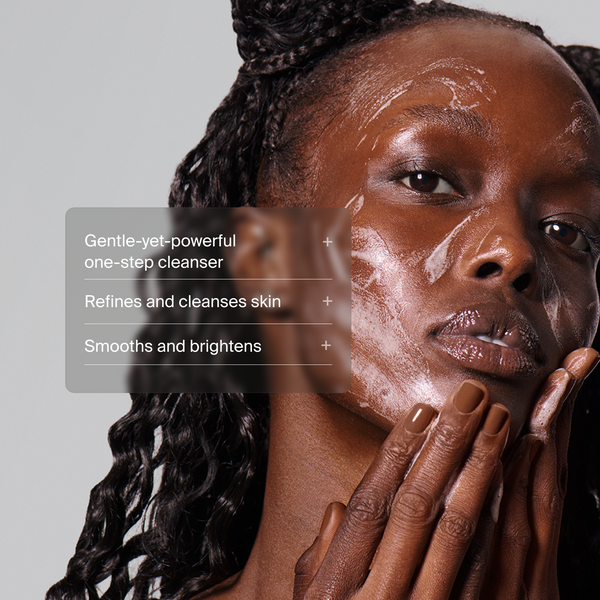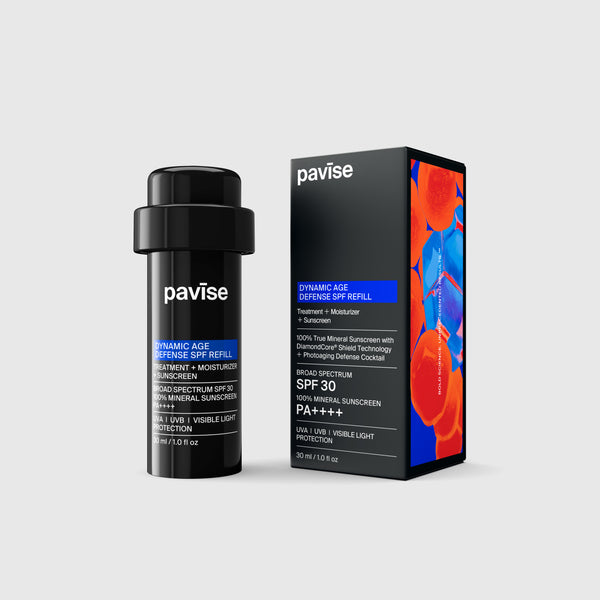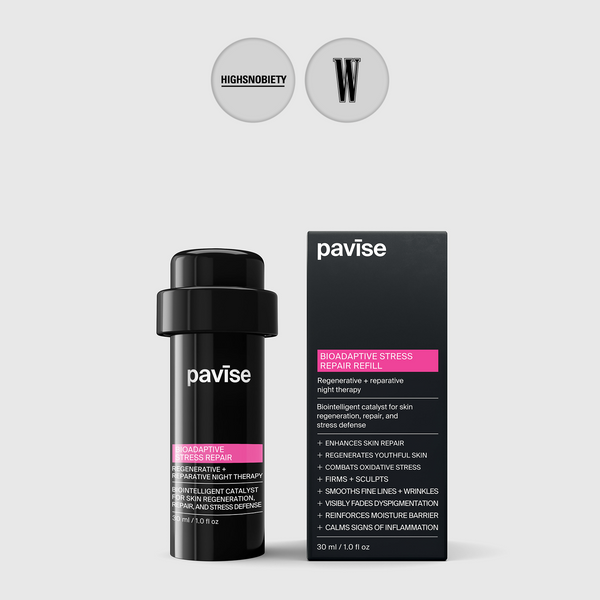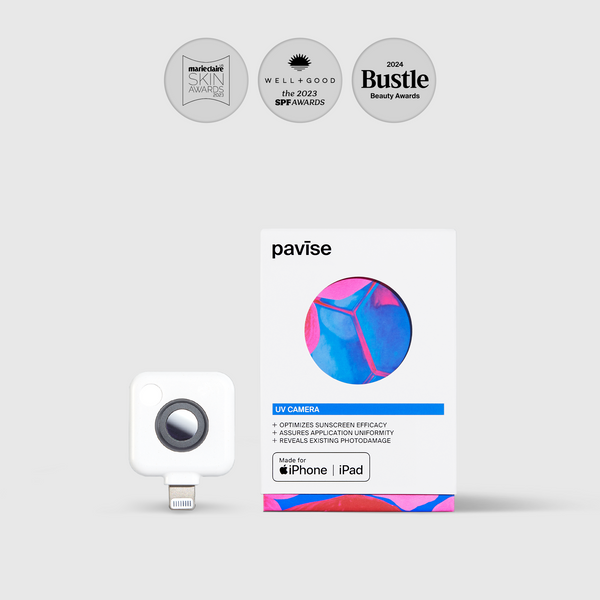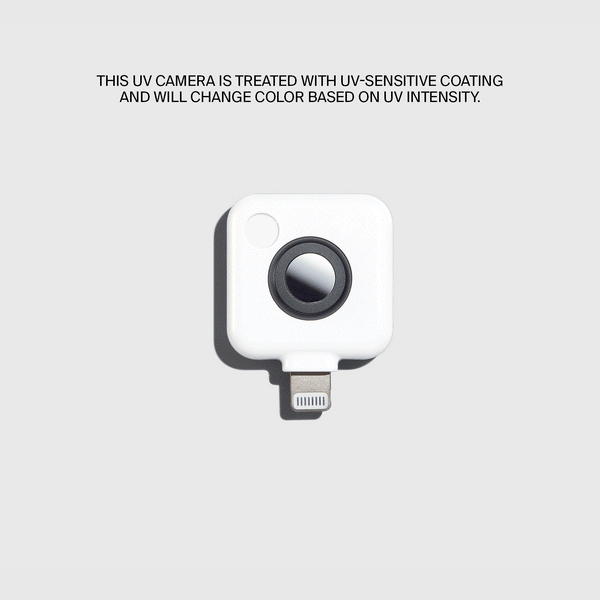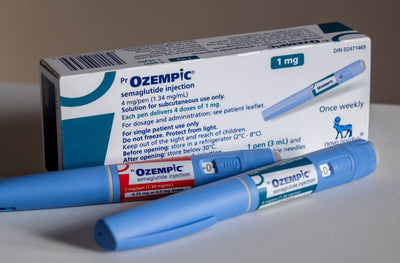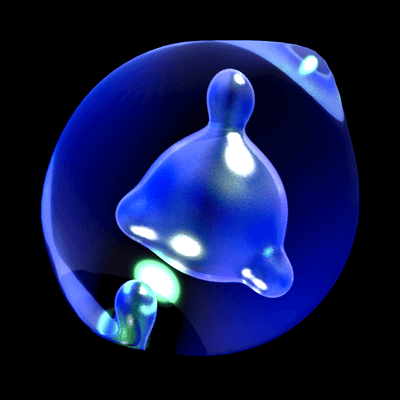UNDERSTANDING ROSACEA: CAUSES, SYMPTOMS, AND BREAKTHROUGH TREATMENTS

What you need to know
Rosacea is a chronic skin condition affecting about 5% of the population, typically manifesting as facial redness, visible blood vessels, and acne-like bumps. There are four main subtypes, ranging from facial flushing to ocular involvement. The condition’s causes are multifactorial, involving both genetic predisposition and environmental triggers like UV radiation, which increases inflammatory reactive oxygen species (ROS).
While no cure exists, current treatments include oral antibiotics, topical creams, laser/light therapies, and emerging injection options like botulinum toxin. Recent studies highlight the effectiveness of skincare products using DiamondCore® zinc oxide, found in Pavise’s Dynamic Age Defense and Bioadaptive Stress Repair. These products neutralize ROS, promote skin repair, and significantly reduce redness and lesions, offering promising relief for rosacea patients through targeted, antioxidant-rich treatment.
What is Rosacea?
Rosacea is a skin condition that typically affects the face, causing redness, visible blood vessels, and bumps that may resemble acne. Rosacea is a common condition experienced by around five percent of the population, but it is recommended to consult a dermatologist before beginning treatment.1 Symptoms of rosacea present differently in every patient; however, there are four main types of the condition, each with its own set of characteristics.

1. Erythematotelangiectatic Rosacea (Subtype I): This type of rosacea is characterized by persistent facial redness, flushing, and visible blood vessels, leading to sensitive, dry skin.
2. Papulopustular Rosacea (Subtype II): Papulopustular rosacea includes redness with acne-like breakouts that can lead to chronic facial swelling.
3. Phymatous Rosacea (Subtype III): This type of rosacea involves thickened skin and irregular surface texture, particularly around the nose.
4. Ocular Rosacea (Subtype IV): Ocular rosacea affects the eyes, causing dryness, irritation, redness, and swollen eyelids.
Subtypes I, II, and III of rosacea typically affect females; however, subtype IV most commonly affects males. While rosacea is common, its exact cause is unclear. However, the development of rosacea is likely the result of a complex interplay between genetics and environmental factors. Although rosacea is more prevalent in individuals of Celtic and Northern European descent, large-scale genomic studies have not yet identified a single gene responsible for the condition. Instead, studies have shown that people with rosacea often exhibit increased activity in genes related to both the innate and adaptive immune systems.2
Environmental factors, such as exposure to ultraviolet (UV) radiation, are believed to play a significant role in the development and severity of rosacea. UV radiation can increase the production of reactive oxygen species (ROS), which are elevated in individuals with rosacea.3 These heightened ROS levels contribute to inflammation and help drive many of the condition’s symptoms.2
Treating Rosacea
Because the causes of rosacea are still yet to be fully understood, there is no true cure for the condition. Additionally, the number of different ways that rosacea can be experienced makes it challenging for clinicians to develop standardized treatment protocols. Despite this, there are various methods that dermatologists currently use to help patients manage the condition, including oral, topical, light- and laser-based, and injection therapies.4
-
Oral Therapies: For moderate to severe papulopustular rosacea, treatments like modified-release doxycycline, isotretinoin, and minocycline have shown evidence of effectiveness. Emerging options such as oral β-blockers for facial flushing and erythema, and hydroxychloroquine for inflammation control, show promise but require further clinical research to confirm their long-term safety and efficacy.
-
Topical Therapies: Recent studies support several effective topical treatments for rosacea, including brimonidine and oxymetazoline for persistent redness and azelaic acid, ivermectin, metronidazole, and minocycline for acne-like bumps. Ivermectin has emerged as an effective topical therapy for papulopustular rosacea, while minocycline foam and gel formulations have also demonstrated clinical benefits.
-
Light- and Laser-Based Therapies: Laser and intense pulsed light (IPL) therapies are recommended for treating facial redness and visible blood vessels in rosacea. Combining energy-based treatments with topical therapies such as oxymetazoline or skin care regimens may enhance results, though proper technique is essential to avoid triggering flare-ups.
- Injection Therapies: Emerging injection therapies for rosacea include botulinum toxin and IL-17 inhibitors, both of which have shown promise in reducing symptoms like redness, flushing, and inflammatory lesions. While studies report high patient satisfaction and clinical improvements when combined with other treatments, these options can be costly and may require repeated sessions or carry a risk of side effects.
While there are several current options for treating rosacea, more treatment options should be developed to address the condition’s diverse subtypes and offer effective solutions for treatment-resistant cases. Fortunately, recent breakthroughs are showing promising results in improving symptom management for those dealing with rosacea.
The Role of Dynamic Age Defense and Bioadaptive Stress Repair in Successful Rosacea Treatment
Rosacea is a complex condition that often manifests due to the inflammatory effects of reactive oxygen species (ROS). These molecules damage the skin and can be responsible for the redness and swelling commonly seen in rosacea flare-ups.5 In recent studies, Dynamic Age Defense cream and Bioadaptive Stress Repair serum have been shown to solve this.1
Dynamic Age Defense and Bioadaptive Stress Repair use Pavise’s DiamondCore® zinc oxide, a cutting-edge molecule designed to enhance skin regeneration and repair.6 DiamondCore® zinc oxide provides users with superior protection from a broader spectrum of UV and has an antioxidant effect against ROS. Previous experiments have discovered that DiamondCore® zinc oxide can capture the ROS produced by UV exposure and provide localized ROS neutralization at the skin surface, where rosacea symptoms often manifest.1,6
Dynamic Age Defense and Bioadaptive stress repair contain powerful antioxidants that work synergistically with DiamondCore® zinc oxide to reduce inflammatory ROS and defend against rosacea symptoms.1,6 Beyond its antioxidant effects, DiamondCore® zinc oxide has been shown to support skin repair and rejuvenation. Previous studies found that it significantly boosts skin cell migration and collagen production, accelerating wound healing and restoring youthful function in aged skin cells. Additionally, ND-ZnO improves the absorption of beneficial ingredients like niacinamide, making it a powerful tool for restoring the skin barrier in those with rosacea.1
In a recent study, DiamondCore® zinc oxide-containing skincare preparations showed significant improvements in reducing facial redness and enhancing overall skin appearance. Among 20 participants with lighter skin tones, 95% experienced clinically significant reductions in skin redness, with similar results seen across all Fitzpatrick Skin Types I–III. Lesion counts also dropped substantially over eight weeks, with the sum of non-inflammatory lesions decreasing from 22 to 1 and all inflammatory lesions resolving completely. Case studies further supported these findings, showing visible improvements in redness, skin texture, and clarity after consistent daily use of DiamondCore® zinc oxide products.1 These results highlight the potential of DiamondCore® zinc oxide as an effective treatment option for managing rosacea symptoms across a diverse range of patients.

The promising results of DiamondCore® zinc oxide-containing products like Dynamic Age Defense and Bioadaptive Stress Repair offer new hope for those struggling with rosacea. By targeting inflammation at the source and enhancing skin repair, these formulations help reduce redness, improve texture, and restore a healthy skin barrier. Pavise’s innovative use of DiamondCore® zinc oxide makes these products a cutting-edge addition to rosacea skincare, offering effective, science-backed relief for patients.
References:
1. Zhang X. et al. Managing Rosacea with Nanodiamon-zinc Oxide: Real-world Evidence for Reduction in Redness and Acne Lesions. J Clin Aesthet Dermatol. 2025;18(7):35–39.
2. Two, A. M., Wu, W., Gallo, R. L., & Hata, T. R. (2015). Rosacea: Part I. Introduction, categorization, histology, pathogenesis, and risk factors. Journal of the American Academy of Dermatology, 72(5), 749–758.
3. Th. Herrling, K. Jung, J. Fuchs, Measurements of UV-generated free radicals/reactive oxygen species (ROS) in skin, Spectrochimica Acta Part A: Molecular and Biomolecular Spectroscopy, Volume 63, Issue 4, 2006, Pages 840-845, ISSN 1386-1425.
4. Zhang, H., Tang, K., Wang, Y. et al. Rosacea Treatment: Review and Update. Dermatol Ther (Heidelb) 11, 13–24 (2021).
5. Forman HJ, Zhang H. Targeting oxidative stress in disease: promise and limitations of antioxidant therapy. Nat Rev Drug Discov. 2021;20(9):689–709. Erratum in: Nat Rev Drug Discov. 2021;20(8):652.
6. Bai X, Yan J, Gilchrest BA. Next-generation zinc oxide-based sunscreens: molecular characteristics and advantages. J Invest Dermatol. 2024;144(2):430–434.e1.
By Nas Atalla - Updated September 24, 2025
